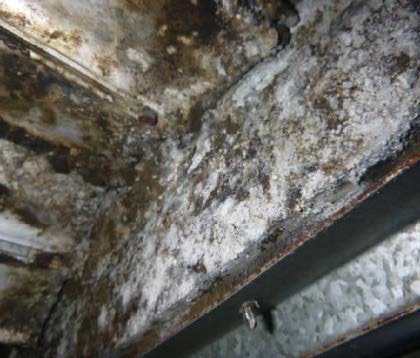Understanding the Link Between the Australian Climate and Mould Growth
The Australian Climate: A Breeding Ground for Mould
The Australian climate, with its diverse range of weather patterns and varying levels of humidity, provides an ideal breeding ground for mould. Mould thrives in warm and moist environments, making the hot and humid summer months in Australia particularly conducive to its growth. The combination of high temperatures and humidity creates the perfect conditions for mould spores to multiply and spread.
Furthermore, Australia’s geographical location exposes it to different climate zones, each with its own unique characteristics. From the tropical regions of Queensland to the Mediterranean-like climate in parts of Western Australia, the country experiences a wide range of conditions that can promote mould growth. It is important to understand the specific climate of your workplace in order to effectively tackle mould issues.

Factors Influencing Mould Growth in Australia
Several factors contribute to the growth of mould in Australia. One of the primary factors is the high humidity levels experienced in many parts of the country. Coastal regions, for example, often have higher humidity due to their proximity to the ocean. Additionally, areas that receive significant rainfall or are prone to flooding are at a higher risk of mould growth.
Other factors influencing mould growth include poor ventilation, water leaks or moisture intrusion, inadequate insulation, and lack of sunlight. Buildings that are poorly maintained or have plumbing issues are more susceptible to mould infestations. It is crucial to address these underlying issues to effectively prevent and control mould growth in the workplace.

Understanding the Impact of Humidity on Mould Growth
Humidity plays a critical role in mould growth. In Australia, the humidity levels can vary greatly depending on the region and time of year. High humidity provides the moisture that mould needs to thrive and reproduce. The warm and humid summer months create an ideal environment for mould spores to settle and grow on various surfaces.
Monitoring and controlling indoor humidity levels is essential to prevent mould growth. The recommended humidity level for indoor spaces is below 60%. Dehumidifiers or air conditioning systems can help regulate humidity and reduce the risk of mould infestation. Proper ventilation is also crucial in removing excess moisture and preventing stagnant air, which can contribute to mould growth.
Identifying Common Mould Types in Australia
Australia is home to various types of mould found in different regions. Some common mould species found in Australia include Aspergillus, Penicillium, Cladosporium, Fusarium, and Stachybotrys. These moulds can cause health issues and damage to buildings if left untreated.
Identifying the different mould types is crucial to determine the appropriate remediation strategies. Consulting with a professional mould inspector or conducting mould testing can help identify the specific mould species in your workplace. This information is crucial in developing an effective mould prevention and control plan.

Practical Strategies to Prevent and Control Mould in the Australian Climate
To tackle mould in the Australian climate, it is essential to implement effective strategies for prevention and control. Here are some steps you can take:
1. Maintain proper ventilation: Ensure your workplace has adequate ventilation to promote air circulation and reduce moisture buildup. This can be achieved by installing exhaust fans or opening windows and doors when weather permits.
2. Address water leaks and moisture issues: Regularly inspect your workplace for leaks, plumbing issues, or moisture intrusion. Promptly repair any leaks and ensure proper drainage to prevent water accumulation.
3. Control humidity levels: Monitor indoor humidity levels and use dehumidifiers or air conditioning systems to maintain humidity below 60%. This can help create an inhospitable environment for mould growth.
4. Promote sunlight exposure: Sunlight has natural mould-killing properties. Open curtains or blinds during the day to allow sunlight into your workplace, especially in areas prone to mould growth.
5. Clean and dry affected areas: If mould is already present, it is vital to promptly clean and dry the affected areas. Use appropriate cleaning solutions and ensure thorough drying to prevent mould spores from spreading.
6. Seek professional assistance: In cases of severe mould infestation or unsure about the best course of action, it is advisable to seek professional assistance. Mould remediation experts can provide specialized services to remove mould and prevent its recurrence.
By implementing these strategies and addressing the specific needs of your workplace, you can effectively prevent and control mould growth in the Australian climate.